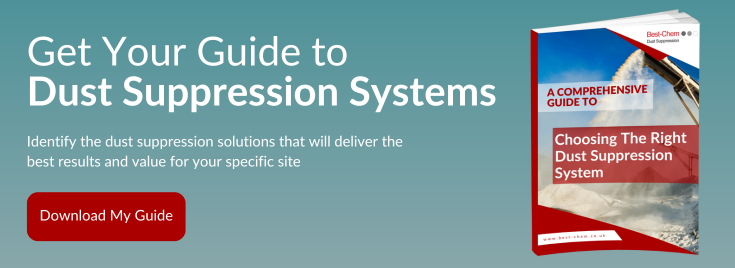
5 Different Ways Of Controlling A High Pressure Misting System
Dust control misting systems are essential assets in industries where machinery produces extensive amounts of dust, like mining, quarrying, construction and demolition, cement production, and dry goods logistics. High-pressure misting systems are efficient solutions for managing airborne pollutants and dust particles, helping you maintain environmental compliance and operational safety for your workers and surrounding members of the public.

The key to efficiency is an optimised control system, which helps you to regulate dust suppression performance in demanding industrial settings. An ideal commercial misting system will have several activation control options, which include sensors, client signals, pushbutton stations, remote controls, and programmable timers. Let’s look at these options in more detail.
1. Programmable Timers
These controls establish specific on/off times for your dust control misting system at set intervals, allowing automated operation without constant manual intervention. This empowers your employees and supervisors to control the system directly. Programmable timers facilitate consistent dust suppression on site and are useful in operations with predictable dust generation patterns – e.g. at a quarry, dust volumes may peak during material transfer or crusher activity. A programmable timer will activate your misting system during these periods and shut it off during quieter or idle phases to conserve water and energy without compromising performance.
2. Remote Control Systems
Remote control systems use on-site motion sensors to enable convenient control of your misting solution from a distance, increasing flexibility and ease of use. This is extremely useful in quarries, mines, and other hazardous environments as it reduces the need to make on-site adjustments. Using a remote control panel, your operators can deactivate, activate, or adjust settings to the misting system, deploying the appropriate response to fluctuating dust levels while remaining at a safe location.
3. Sensors
Automated misting systems can be enhanced by a network of intelligent sensors. These automatically activate the misting system based on real-time temperature, wind direction, humidity, and dust volume readings. Integrating sensors into your misting system can help maximise your system’s dust suppression capabilities, as well as improving precision. For example, dust concentration or particulate sensors will detect a rise in airborne dust levels and activate your misting system to suppress the issue once it breaches a certain threshold. This can minimise water wastage and improve the responsiveness of your system.
4. Automatic Misting Systems: Client Signals
In this case, the misting system is integrated into the client’s control system, so that misting activities can be synchronised with other operational equipment. In a material handling system or conveyor belt, for example, the automatic misting system can be programmed to activate whenever a conveyor is in use, and switch off when it stops. This integration ties your dust suppression solution directly to dust generating activities, enhancing system efficiency.
5. Pushbutton Stations
Pushbutton stations provide convenient manual controls at strategic places for easy manual activation of your misting system. These control systems are straightforward and easy to implement, and are ideal for localised applications, and for responding to events where immediate dust suppression is required – e.g. an increase in dust concentration due to unexpected weather activity. Pushbutton stations are often installed in high-risk areas, such as loading docks and material storage areas, to allow targeted dust suppression when the need arises.
Find Out More About Commercial Misting Systems
Get in touch today to find out about our cost-effective automatic misting systems, and how they can support the challenges of your operation.
Image Source: Canva
